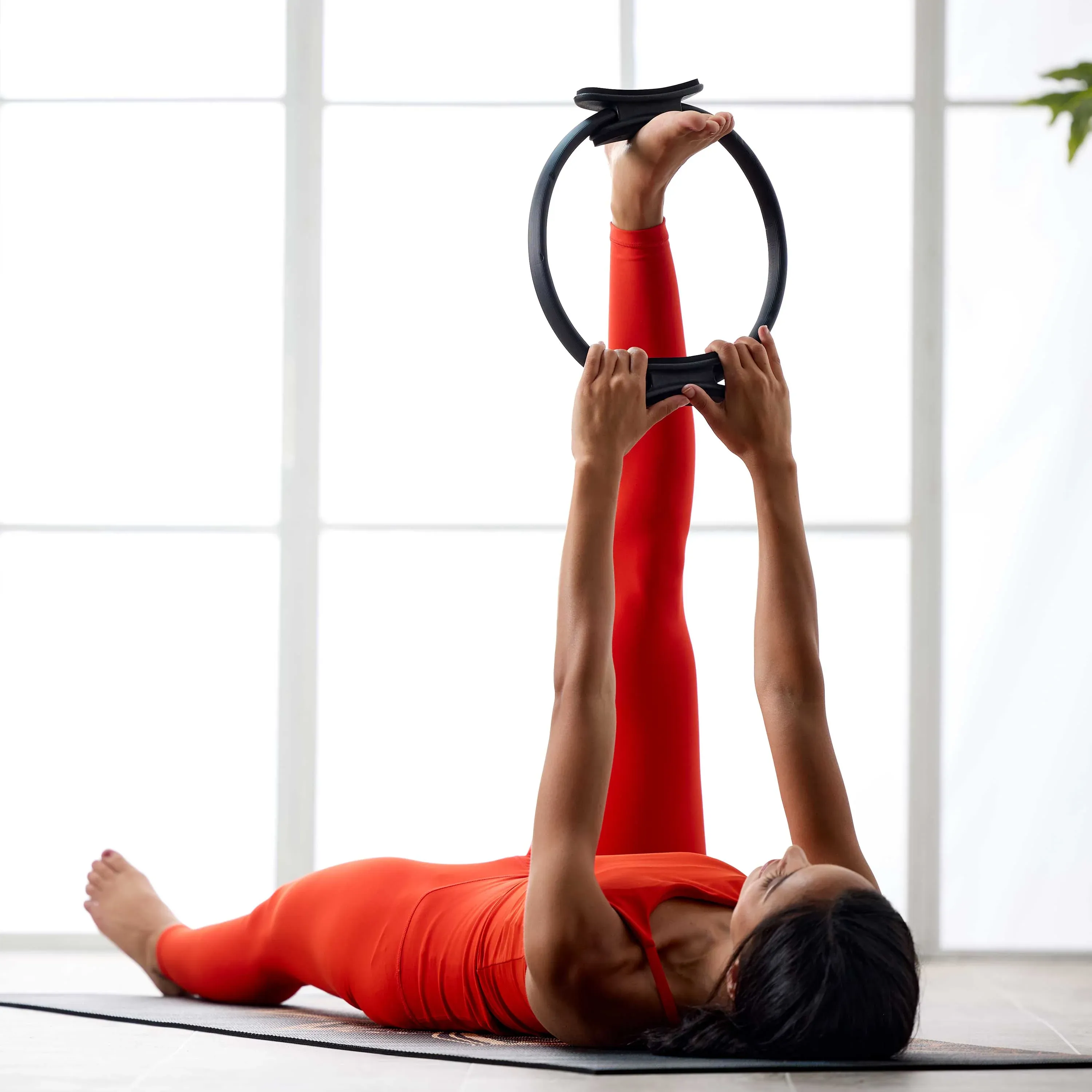The Pilates ring, also known as a magic circle, is a versatile piece of exercise equipment designed to enhance your Pilates practice and improve overall fitness. This lightweight and portable tool is typically made of flexible material with padded handles on both the inside and outside of the ring. But how does it work, and why should you consider incorporating it into your workout routine?
The Design of the Pilates Ring
The Pilates ring’s circular design provides resistance when compressed, making it ideal for strengthening various muscle groups. The padded handles ensure comfort while you perform exercises that target your core, arms, legs, and back. The simplicity of its design allows users of all fitness levels to utilize the ring effectively.
Resistance Training and Muscle Engagement
At its core, the Pilates ring offers resistance training. By squeezing the ring during exercises, you activate specific muscle groups and increase the intensity of your workout. The resistance helps:
- Tone muscles: The controlled compression and release motion work to sculpt lean muscles, especially in areas like the inner and outer thighs, arms, and chest.
- Improve strength: Consistent use of the ring builds muscular endurance and strength.
- Enhance flexibility: The resistance allows you to deepen stretches safely.
Core Strength and Stability
Pilates emphasizes core strength, and the ring plays a significant role in engaging your abdominal muscles. Exercises like holding the ring between your hands or legs while performing core movements challenge your stability and build a stronger, more balanced midsection.
Versatility in Workouts
The Pilates ring is incredibly versatile. Here are some ways it can be used:
- Leg exercises: Place the ring between your thighs or ankles and squeeze to tone the lower body.
- Arm workouts: Hold the ring with both hands and compress to work the chest, biceps, and shoulders.
- Core-focused moves: Use the ring during planks or sit-ups to intensify your abdominal workouts.
- Stretching: Incorporate the ring to support and enhance stretching exercises.
Benefits of Using a Pilates Ring
- Improved posture: Regular use of the ring can help align your body and improve posture.
- Low-impact resistance: The ring’s gentle resistance makes it suitable for people recovering from injuries or those looking for a low-impact workout.
- Convenience: Its lightweight and portable nature make it easy to use at home or bring to a studio.
- Full-body workout: The ring targets multiple muscle groups, ensuring a comprehensive exercise session.
Who Can Use a Pilates Ring?
The Pilates ring is suitable for almost everyone, from beginners to advanced practitioners. However, individuals with specific health conditions or injuries should consult a healthcare professional or Pilates instructor before incorporating the ring into their routine.
The Pilates ring is a simple yet effective tool that can elevate your fitness journey. Whether you aim to tone muscles, build strength, or enhance flexibility, the Pilates ring offers a wide range of benefits. Incorporating this compact and versatile equipment into your workouts can help you achieve a balanced and strong body, all while keeping your routines fun and challenging.
